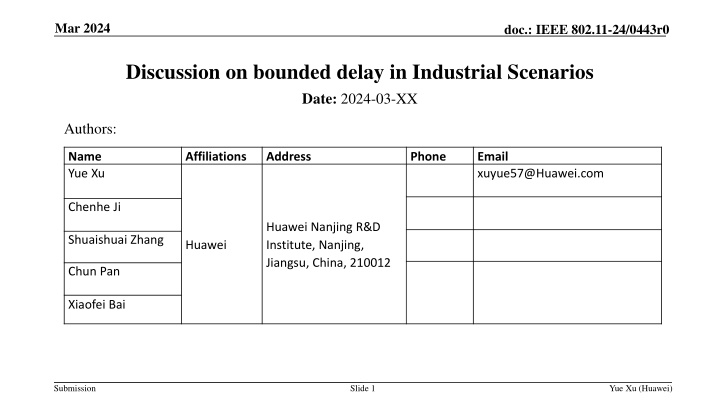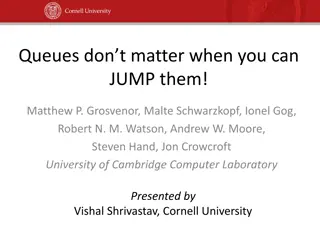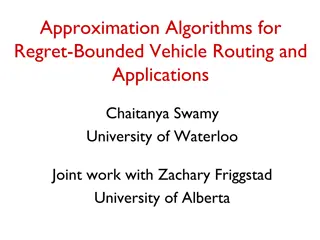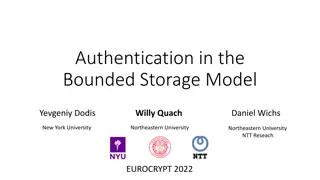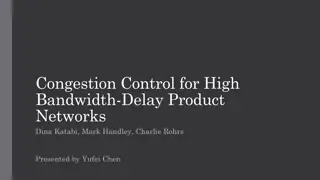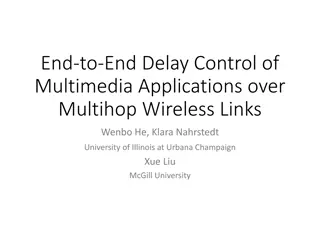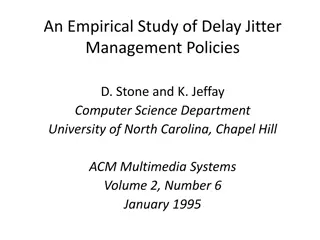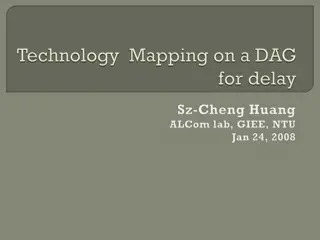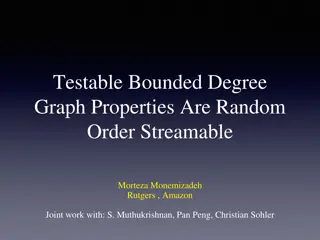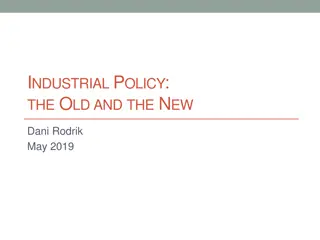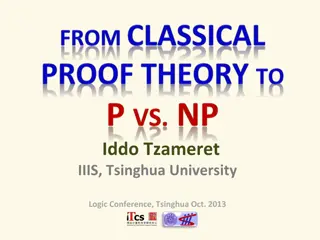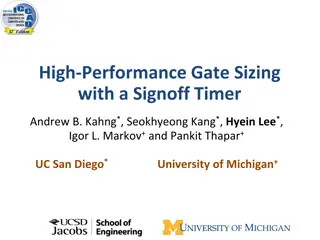Discussion on bounded delay in Industrial Scenarios
IEEE 802.11-24/0443r0 explores solutions to address bounded delay challenges in industrial scenarios, focusing on deterministic latency and high reliability requirements. The proposed options aim to improve performance for low-latency services.
Download Presentation

Please find below an Image/Link to download the presentation.
The content on the website is provided AS IS for your information and personal use only. It may not be sold, licensed, or shared on other websites without obtaining consent from the author.If you encounter any issues during the download, it is possible that the publisher has removed the file from their server.
You are allowed to download the files provided on this website for personal or commercial use, subject to the condition that they are used lawfully. All files are the property of their respective owners.
The content on the website is provided AS IS for your information and personal use only. It may not be sold, licensed, or shared on other websites without obtaining consent from the author.
E N D
Presentation Transcript
Mar 2024 doc.: IEEE 802.11-24/0443r0 Discussion on bounded delay in Industrial Scenarios Date: 2024-03-XX Authors: Name Yue Xu Affiliations Address Phone Email xuyue57@Huawei.com Chenhe Ji Huawei Nanjing R&D Institute, Nanjing, Jiangsu, China, 210012 Shuaishuai Zhang Huawei Chun Pan Xiaofei Bai Submission Slide 1 Yue Xu (Huawei)
Mar 2024 doc.: IEEE 802.11-24/0443r0 Introduction Latency and Reliability are two of the most important guiding criteria in UHR (Ultra High Reliability) SG[1]. Achieving bounded delay and high single-pass success rates is a common requirement for many services in industrial scenarios [2]. However, current Wi-Fi mechanisms lack support for these packets that require deterministic latency. To address this challenge and enhance performance requirements for low latency and high reliability in industrial scenarios, we propose three potential solutions from high level. Submission Slide 2 Yue Xu (Huawei)
Mar 2024 doc.: IEEE 802.11-24/0443r0 Recap: UHR in Industrial scenarios Type Brief info AGV (Automated Ground Vehicle) / AMR (Autonomous Mobile Robot) Involving communication, including guidance control, process data exchange, video/image, and emergency stop, between robots and a control system, Assembly line Combination of AGV/AMR, sensors, robot/drone motion control, and video transfer. Robot/drone motion control Remote operation with haptics communication, programmed robot operation with emergency stop. Sensors Periodical report of information to the control system. High-density deployment environment. Bounded delay and high-reliability services find extensive application in industrial scenarios. In many scenarios or services, traffic flows can be categorized as bounded delay traffic. Consequently, the effective utilization of 11bn (or Wi-Fi 8) in industrial settings to fulfill the prescribed service requirements, notably high reliability and low latency, assumes paramount importance. Submission Slide 3 Yue Xu (Huawei)
Mar 2024 doc.: IEEE 802.11-24/0443r0 Goal and Issue In an industrial environment, bounded delay and a relatively high single transmission success rate need to be ensured (shown in the table). Based on the profinet protocol, if the delay exceeds 24 ms, users may go offline. However: Within Wi-Fi networks, aperiodic management packets, such as those for measurement, negotiation, and capability announcements, are prevalent. Presently, the Wi-Fi mechanism lacks support for bounded delay scheduling of these packets, and triggers fail to indicate the scheduling of packets in a queue. In a bounded delay scenario, an interruption of a service with a high deterministic latency requirement may cause a service device to go offline, thereby disrupting normal operation of an industrial production line. Submission Slide 4 Yue Xu (Huawei)
Mar 2024 doc.: IEEE 802.11-24/0443r0 Potential Options We believe that there are three potential ways to better ensure deterministic latency and high single transmission success rate in industrial scenarios. Option 1: STA TxMode Negotiation based solutions - The AP negotiates with the STA to mark and identify the traffic of specific STAs or services. - The interaction process between the AP and the STA needs to be added. Option 2: Trigger based solutions - Receive and transmit feature data by (re-)using an existing trigger frame or designing a new trigger frame Option 3: TWT (or rTWT) based solutionsil - Reuse or add TWT (or rTWT) functions, split TWT sessions, and send&receive specific data flows based on feature rules. Submission Slide 5 Yue Xu (Huawei)
Mar 2024 doc.: IEEE 802.11-24/0443r0 Summary In this contribution, we illustrate the problems in the industrial scenario: the current Wi-Fi mechanism lacks support bounded delay scheduling of these packets. We have provided 3 potential solutions (directions) and requires more details and thorough deliberation. Submission Slide 6 Yue Xu (Huawei)
Mar 2024 doc.: IEEE 802.11-24/0443r0 References [1] UHR proposed PAR, IEEE 802.11-23/480 [2] 11-23-1570-00-uhr-Latency Consideration of Industrial Scenarios Submission Slide 7 Yue Xu (Huawei)
Mar 2024 doc.: IEEE 802.11-24/0443r0 SP Do you think the issue of bounded delay needs to be further discussed in industrial scenarios? - Yes - No - Abstain Submission Slide 8 Yue Xu (Huawei)
